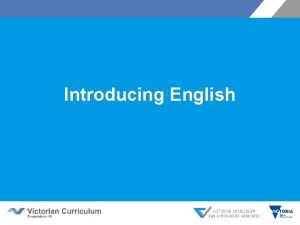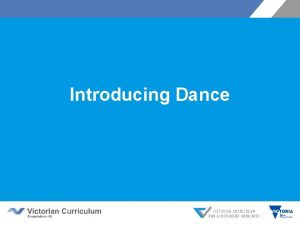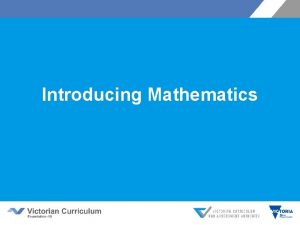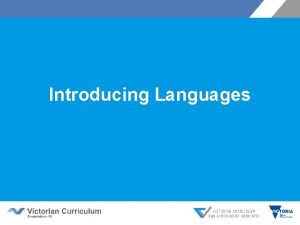Introducing Music Victorian Curriculum F 10 Released in





- Slides: 5

Introducing Music

Victorian Curriculum F– 10 • Released in September 2015 as a central component of the Education State • Provides a stable foundation for the development and implementation of whole-school teaching and learning programs • The Victorian Curriculum F– 10 incorporates the Australian Curriculum and reflects Victorian priorities and standards http: //victoriancurriculum. vcaa. vic. edu. au/

Aims The Music curriculum aims to develop students’: • confidence to be creative, innovative, thoughtful, skillful and informed musicians • skills to listen, improvise, compose, interpret, perform, and respond with intent and purpose • aesthetic knowledge and respect for music and music practices across global communities, cultures and musical traditions • understanding of music as an aural art form, its relationship with other arts forms and contributions to cultures and societies.

Structure Strands Explore and Music Express Ideas Practices Present and Perform Respond and Interpret Achievement standards • The first achievement standard is at Foundation and then at Levels 2, 4, 6, 8 and 10. • A curriculum for students with disabilities is provided in this learning area

Key messages • Each Arts discipline is based on two overarching principles: Ø students learn as artist and as audience Ø students learn through making and responding • The achievement standard in Foundation reflects the advice in Victorian Curriculum F– 10: Revised curriculum planning and reporting guidelines about the importance of the Arts in the early years of schooling • Music is learned through developing skills and knowledge associated with the elements of music. Musical ideas are conceived, organised and shaped by aspects and combinations of rhythm, pitch, dynamics and expression, form and structure, timbre and texture.








